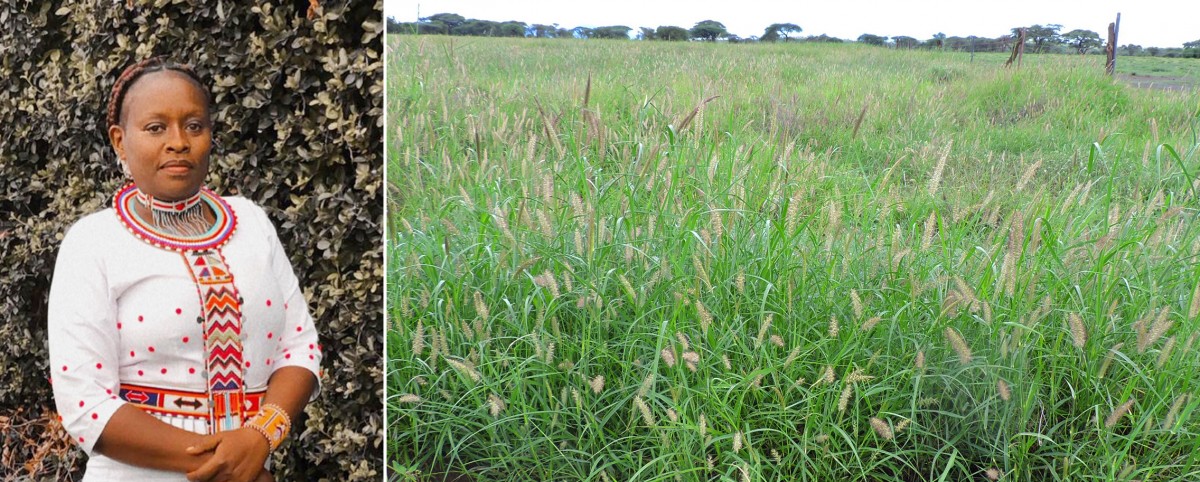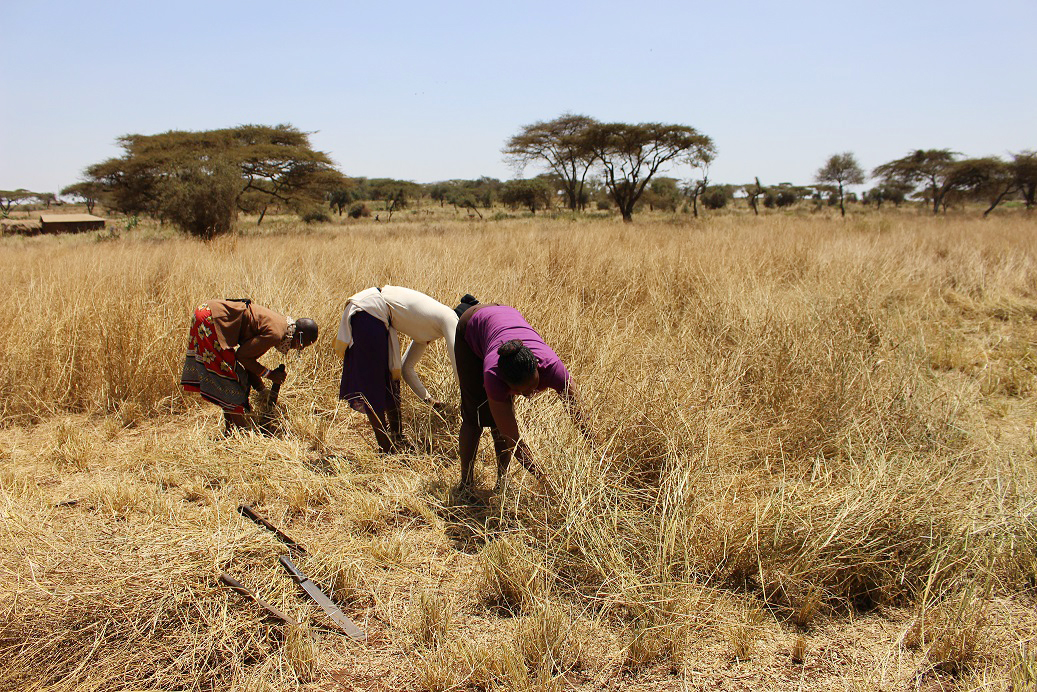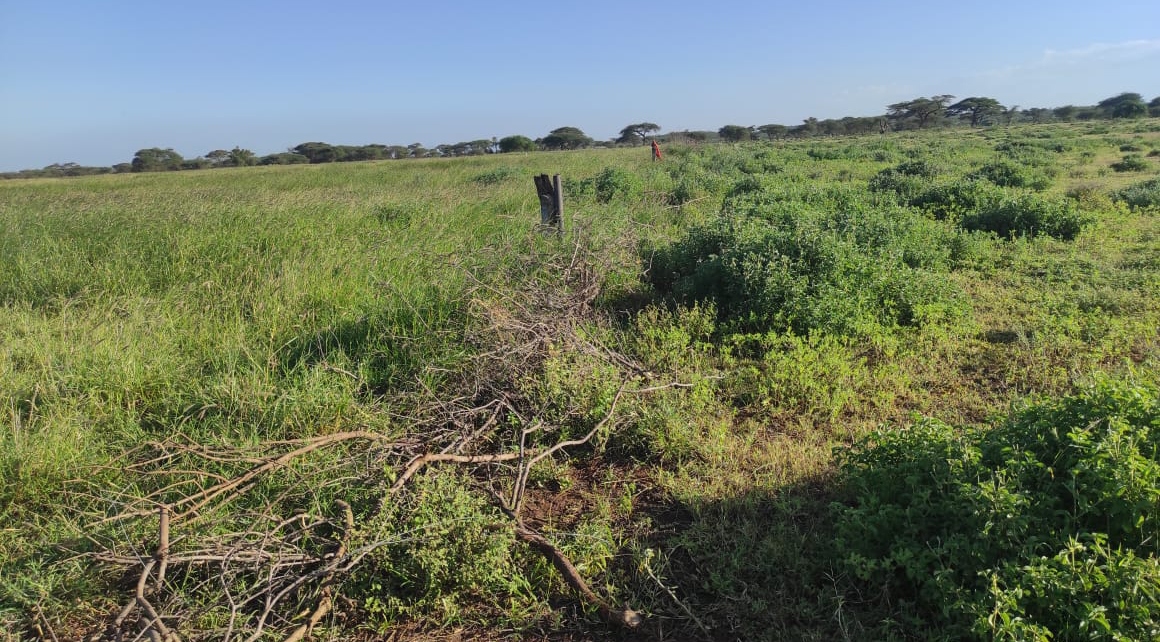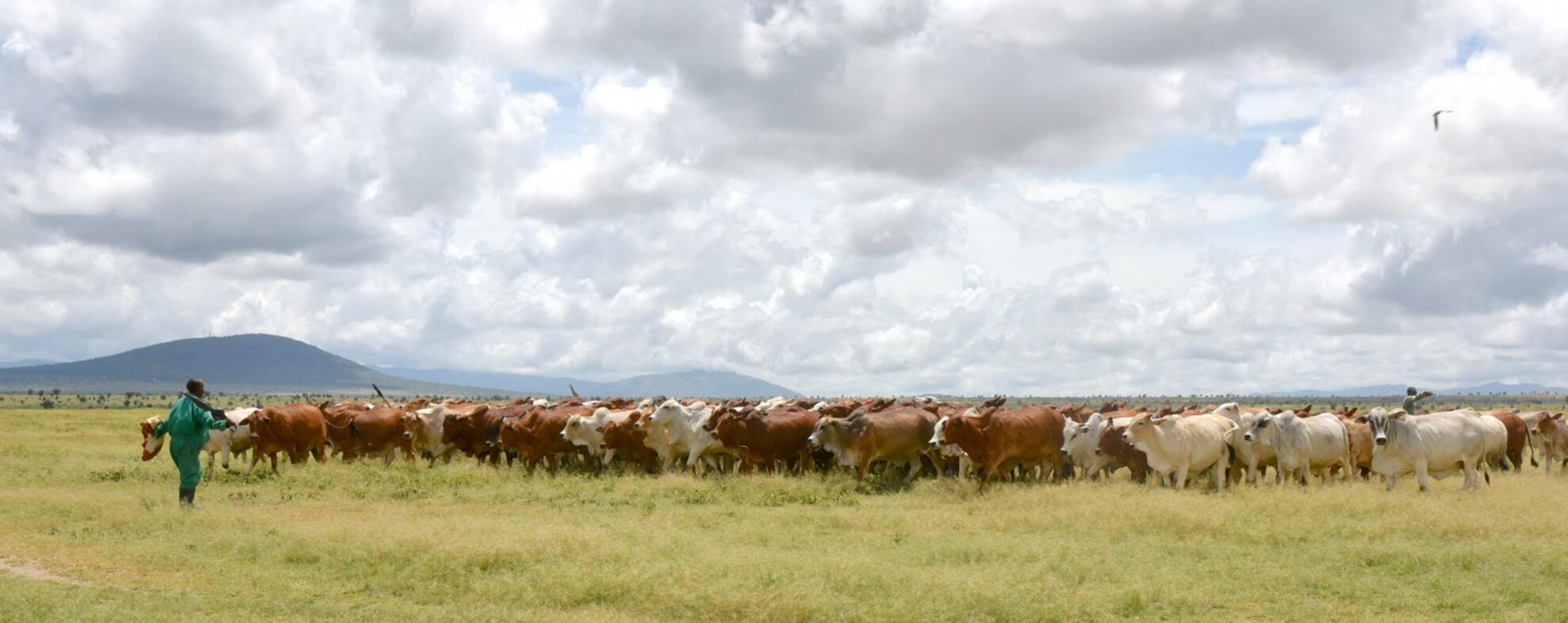
Seeds of change: supporting young local leaders to level up rangeland restoration efforts
While rainforests and woodlands frequently capture the world’s restoration imagination, many of us take the grass beneath our feet for granted.
But for Charity Lanoi, a Kenyan dryland advocate and Maasai Wilderness Conservation Trust (MWCT) livelihood coordinator, grass is a critical resource – and community development opportunity. Now, thanks to the Youth in Landscapes Initiative (YIL) and Global Landscapes Forum (GLF)’s Restoration Stewards program, she’s better placed than ever to share that message and scale up her important work in the area.
As the Restoration Steward for drylands under the youth initiative, Lanoi is receiving funding, training and mentorship to support the work she is doing with the Moilo Grass Seedbank in Kuku Group Ranch–a collectively-owned rangeland near Amboseli National Park in the foothills of Mount Kilimanjaro, Southern Kenya. The Ranch spans 283 hectares (700 acres) and is home to around 20,000 people, most of whom are Maasai.
Lanoi runs the seedbank together with nine other fellow Maasai women as part of a livelihoods project under the MWCT, which aims to provide employment opportunities for Maasai women. The women have fenced off four hectares (ten acres) of degraded land from grazing livestock and wildlife to cultivate native and endemic grass species, from which they harvest the seeds and hay, and then sell at affordable prices to their predominantly pastoral community members.
The hay provides a crucial fodder resource, particularly during the dry season when pasture is scarce. Meanwhile, the seeds provide the opportunity for other individuals and groups to re-seed degraded rangeland areas – and to start their own seedbanks, too.
 Charity Lanoi (left); the Moilo Grass Seedbank plot in Kuku Group Ranch in southern Kenya (right). Lanoi and a group of women from her community are working to restore the productivity of their pastoral land. Photos courtesy of Charity Lanoi
Charity Lanoi (left); the Moilo Grass Seedbank plot in Kuku Group Ranch in southern Kenya (right). Lanoi and a group of women from her community are working to restore the productivity of their pastoral land. Photos courtesy of Charity Lanoi
To deepen her knowledge and expertise, Lanoi has been matched with two mentors from the International Livestock Research Institute (ILRI): Fiona Flintan, a rangelands and pastoralism scientist currently based in Italy, and Jason Sircely, an ecosystem ecologist who works at the organization’s Kenyan headquarters.
ILRI has considerable expertise on rangelands, including pastoralists and livestock, and the two mentors are well-placed to provide Lanoi with valuable technical, social and ecological expertise, as well as to spread awareness about the work and situate it within wider global conversations about rangeland protection and restoration.
The mentorship also fits well with ILRI's own objectives.
Historically, rangeland ecosystems have received little international attention and concern compared to other types of landscapes, and ILRI is working hard through its involvement with the GLF and the UN Decade on Ecosystem Restoration – amongst other initiatives – to raise their profile.
‘The restoration of rangelands and drylands – particularly at scale – is very much behind forests, in terms of the discussion and the dialogue, as well as the practical application,’ said Flintan in an interview. ‘So it's great to see an initiative that's grown out of the community, and that's being taken forward in a way that it looks like they could scale up.’
A changing landscape
In the past, said Lanoi in an interview, a project like the grass seedbank would not have been necessary. Her grandparents – also pastoralists at Kuku Group Ranch – described lands lush with a wide range of grass species. But many of these species had disappeared by the time Lanoi was born, due to land degradation from poorly-organized grazing, population pressure and other socio-political causes.
Coupled with the impacts of climate change, degradation has worsened and the environment has become even less conducive to keeping pastoralists' preferred perennial grasses alive.
‘When I was growing up, there was a lot more rain,’ Lanoi said. ‘And it wasn't this hot. Now it's very hot, and when it rains, the grass seeds are gone so only weeds come up, and after a while they dry up, too. If we don’t intervene, [the situation] will only get worse.’
The growing frequency of weather extremes are highlighting the fragility of the community’s livelihoods. In the severe droughts of 2009 and 2017, a lot of livestock owned by pastoralists and wildlife perished in the region.
‘I then realized that there is a need to establish restoration activities to build resilience of the community and provide conservation-oriented alternative sources of income,’ said Lanoi in an interview with GLF when her stewardship was announced late last year.
 Women from the Moilo seedbank harvest hay in the dry season. Photo courtesy of Charity Lanoi
Women from the Moilo seedbank harvest hay in the dry season. Photo courtesy of Charity Lanoi
Wins and losses
So far, the seedbank project has proved both popular and profitable. The women’s seeds are selling consistently, and hay is in high demand throughout the dry season. Group members are benefiting from the extra income.
‘They can now take care of their kids, send them to school and buy the basics for the family,’ said Lanoi. ‘And the women in my culture are very generous, so the impact is much more than just ten women, because we are sharing all that which is gained with the children and the wider community.’
Other community members are getting inspired by the women’s example and establishing their own seed banks, too. ‘I think people are beginning to see that there’s a lot of potential in these practices – especially as a safety net during times of drought,’ said MWCT conservation manager David Okul. ‘It’s also drawing attention to the impacts of overgrazing, which many people aren’t used to thinking about, because it was never an issue in the past.’
But maintaining healthy seed stock in a changing climate can be challenging, especially during times when water is scarce.
To address this, mentor Sircely hopes to use his ecological expertise to help Charity hone in on the most appropriate and resilient species and practices. ‘The ‘grass bank’ approach of closing an area to grazing and harvesting the seeds and fodder may seem simple, yet is challenging to implement as an efficient rangeland restoration mechanism,’ he said in an email.
‘Selection of grass species and management of the grass bank are not trivial matters,’ added Sircely, ‘and careful attention is needed to produce grass seed suitable for rangelands with variable soil types and where grazing, resting, and species-specific reseeding techniques each affect rangeland reseeding success.’
Another key challenge – which Sircely also hopes to help the group to address effectively – is preventing attempted incursions by the very large and powerful local wildlife – namely elephants, zebras and giraffes – who are often extremely determined to break in and eat the seedbank’s lusher-looking pastures, especially in the dry season.
Support for solutions
Fortunately, the Restoration Stewards program looks set to help address these challenges. The group will use the majority of the funds it receives to build a bigger, stronger fence around the seedbank. They will also use some of the money to set up beehives – which, as well as providing an extra income source from honey harvesting, are a traditional wildlife deterrent in the region: ‘they’re especially good for putting off elephants,’ said Lanoi.
‘So we’re hoping that through this investment, our challenges with wildlife incursions will be solved once and for all,’ she said. ‘I have a lot of hope that with the rehabilitated fence, we will gradually be able to improve our yields, and the women will also get more income as compared to other years, from these yields and from the honey harvest.’
 The fence around the seedbank is destroyed in some areas. Funds Charity has received will go to reinforcing the fence to keep away livestock and wildlife. Photo courtesy of Charity Lanoi
The fence around the seedbank is destroyed in some areas. Funds Charity has received will go to reinforcing the fence to keep away livestock and wildlife. Photo courtesy of Charity Lanoi
The project has already demonstrated the multiple benefits of investing in the community's women's livelihoods, and Flintan sees the stewardship as a useful opportunity to highlight the role of women in pastoralist systems more generally.
‘Women play very important roles in pastoralism as natural resource managers, as well as livestock producers and service providers – whether that's veterinary, medical or taking care of children,’ she said.
‘But often these roles and responsibilities aren't recognized very strongly: when people talk about pastoralists, the image they tend to have is a man herding his cattle across a plain or something, and I think there isn't an appreciation of the role that women play within the production system,’ Flintan added. ‘So it's great to see a group of women taking the initiative, and also being given that space by the community to take it forward.’
Given that this year marks the beginning of the United Nations Decade on Ecosystem Restoration; that an International Year of Rangelands and Pastoralists is likely to be approved in September by the UN General Assembly; and that the International Rangelands Congress and International Grasslands Congress will be meeting jointly in Kenya in October, the time is right to raise the profile of projects like Lanoi’s – and of the importance of rangelands and drylands more generally, said Flintan.
‘There's lots of places and spaces to share what Charity is doing, and to help make connections with others that are doing similar work so they can share experiences and knowledge,’ she said. ‘That's the [mentorship] role that I anticipate playing.’ While she hopes to visit Lanoi later in the year, most of their communications will occur online, with Sircely playing a more hands-on, technical role.
Lanoi is also looking forward to the opportunity to use some of the GLF funds to do more community outreach and spread local awareness about restoration – including by establishing a tree nursery and donating trees to schools and communities.
‘I think that through this Stewardship, the conservation and restoration word will be spread to the entire community,’ she said, ‘and in the years to come, I believe we will have a better place to live.’
--
Charity Lanoi is one of one of six young restoration champions selected from across the globe, each working in a different type of ecosystem (including drylands, forests, oceans, peatlands, mountains and wetlands). The year-long program provides mentorship, funding and training to help boost the impact and profile of the Stewards’ projects.





